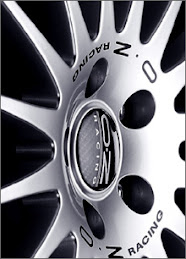The World’s Six Fastest Eco-Cars
Goodbye econoboxes. Hello green scream machines.
The days of fuel economy only coming in small,
slow and stripped-down cars are over. Every major auto show these days
brings the unveiling of another green super car using hybrid or electric
car technology to conserve fuel while delivering Ferrari-like
performance. Do any of these wild concepts have a real shot at becoming
cost-effective realities? Not so much. And yet, with each new green
racer, the appeal of hybrids and electric cars to mainstream drivers
grows a little stronger. Here are our all-time fantasy favorites that
could leave the
Tesla Roadster and
Fisker Karma—two screaming fast and quite real production cars—curled up on the pavement coughing dust.
Let's not forget that, in the real world, one of the most practical
and immediate ways to conserve fuel is to drive at the legal speed
limit.
1Shelby Ultimate Aero EV
(Zero-to-60 in 2.5 seconds / 1,000 Horsepower)
Shelby Supercars, the firm that manufactures the world's fastest
production car, unveiled the world's fastest electric car in January
2009. The Ultimate Aero EV can reach speeds of 208 mph and can
accelerate to 60 mph in just 2.5 seconds. It is powered by a twin motor
system, producing a staggering 1,000-horsepower and 800 lb-ft of torque.
According to Shelby, the Ultimate Aero EV will have a range of between
150 and 200 miles. The manufacturer expects to roll out pre-production
versions of the vehicle by June—and then plans to use its technology to
produce small and more practical electric cars.
2Namir Hybrid
(Zero-to-62 mpg in 3.5 seconds / 362 Horsepower)
The most recent addition to the green super car club is the Namir
Concept, a striking new hybrid supercar developed jointly by Italdesign
Giugiaro and the iconic British automotive engineering firm, Fraser-Nash
Research. Unveiled at last week’s Geneva Motor Show, the exotic
vehicle boasts output of 362 horsepower, a top-speed of 187 miles per
hour, and fuel economy as high as 110 miles per gallon. The secret is a
hybrid system that utilizes a gas-powered endothermic rotary engine, a
400-volt lithium polymer battery pack, and four electric motors—two at
the front axle, two at the rear. And perhaps most importantly, the
chassis weighs only 250 pounds. By the way, Namir means ‘tiger’ in
Arabic. Very fitting.
3Toyota Alessandro Volta
(Zero-to-60 in Under 4 seconds / 408 Horsepower)
A collaboration between Toyota, and again, Italdesign Giugiaro, this
concept from a few years back bears the name of the iconic physicist and
inventor of the battery. Built on a carbon fiber chassis, the sleek
three-seater is powered by the same four-wheel-drive hybrid system as
the one found in the upcoming
Lexus RX 450h—and its predecessor, the
RX 400h.
The Volta combines a V6 gas engine and two electric motors, one at
each axle. Total output is a 408 horsepower, which results in a
sub-four second zero-to-60 sprint, and a top-speed of 155 miles per
hour.
4Toyota Supra HV-R
(Zero-to-60 in Under 4 seconds / 700 Horsepower)
Designed by Parisian firm Sacha Lakic, this hybrid racecar feeds
power to all four wheels thanks to a 4.5-liter 480-horsepower Super GT
V8 engine combined with three electric motors—one at the rear-axle, and
two in each of the front-wheels. Total output is a Nascar-like 700
horsepower. Due to a mostly stripped-out interior, the car weighs about
2,400 pounds. The HV-R was the first hybrid racecar ever to win a
major racing event when it finished first place at the 616-lap Tokachi
24 in Japan in 2007.
5BMW Formula 1 KERS
(Approximately 750 Horsepower)
Taking Formula 1 into a more eco-friendly direction, the BMW unveiled
the Sauber F1.09 in January 2009. The Sauber team is employing the
braking technology called Kinetic Energy Recovery System, or KERS. A
kind of high-powered variant of regenerative braking, KERS captures
energy created during braking and stores it for use by the hybrid
powertrain. The Sauber F1 racecar uses this technology in much the same
way standard BMW production vehicles utilize
ActiveHybrid technology.
BMW hopes to learn more from the F1 experiment in order to make
advancements in the consumer market. BMW Sauber still hasn’t decided
whether it will race with its kinetic energy recovery system in this
year’s season-opening Australian Grand Prix.
6Wrightspeed X1
(Zero-to-60 in About 3 Seconds / 300 Horsepower)
Built by Ian Wright, a former Tesla engineer, the Wrightspeed X1 is a
rear-drive open-wheel roadster outfitted with an all-electric
powertrain. The system unites an electric motor from AC Propulsion,
lithium ion batteries from A123, and a Honda transmission. Its compact
Ariel Atom body features lightweight components and an aerodynamic
design. The Atom was the perfect candidate due to its lightweight and
efficient design. The little racer attracted a lot of attention when it
entered a drag race and beat out a Porsche Carrera GT in front of news
cameras in 2006. Wright promises a production version of the X1, but it
will be heavily modified in order to meet on-road safety standards.
http://www.hybridcars.com/news/worlds-six-fastest-eco-cars-25631.html


























